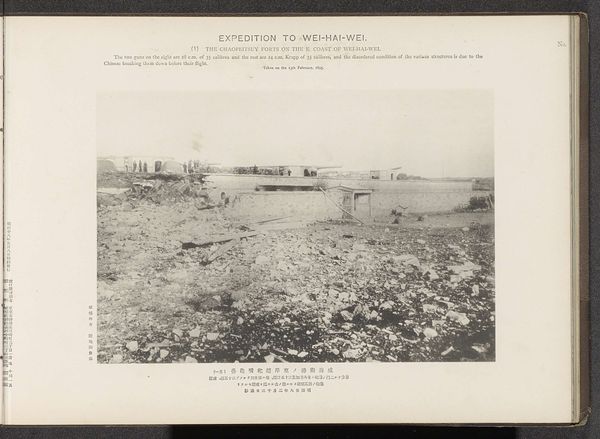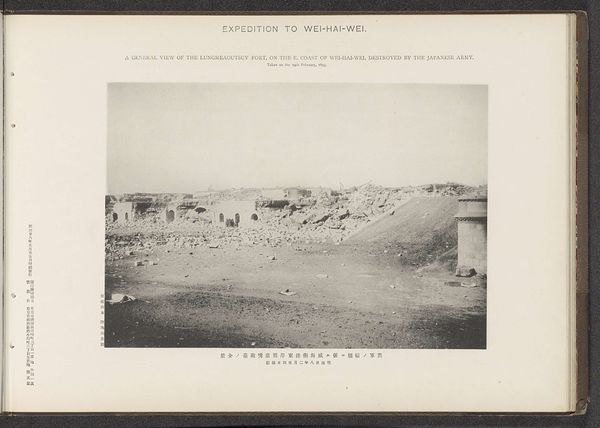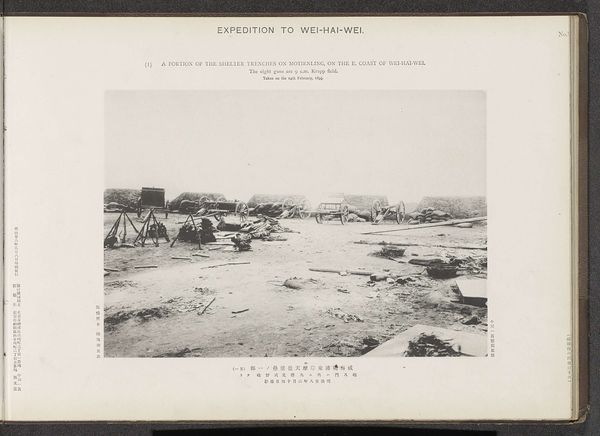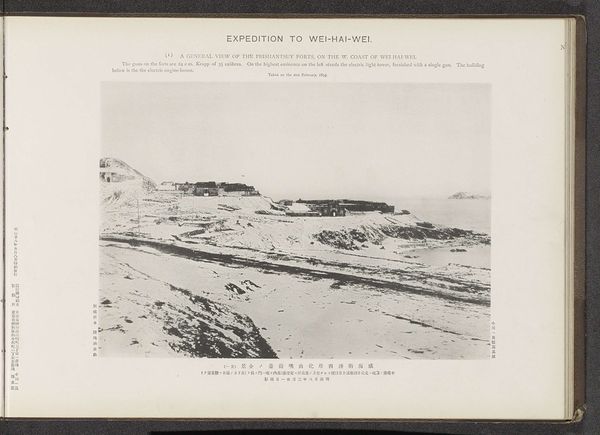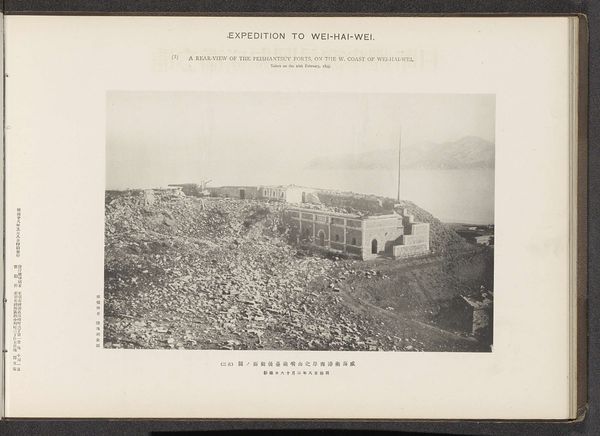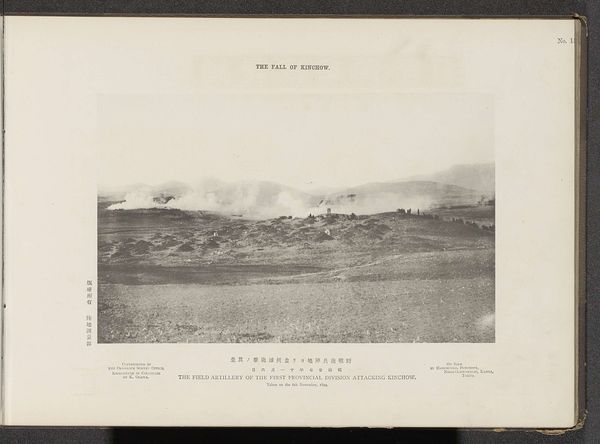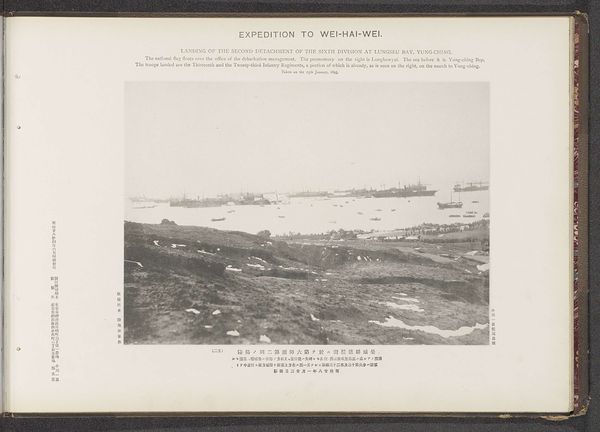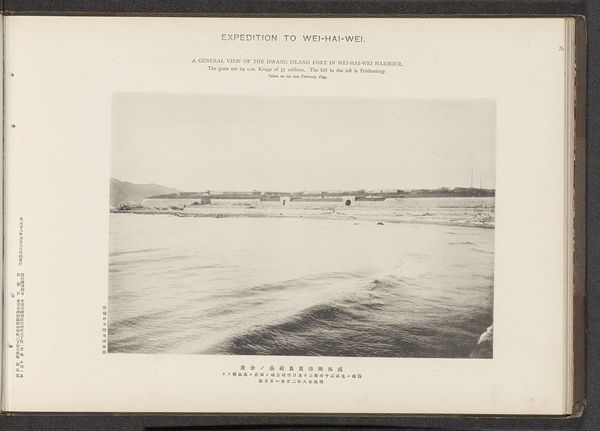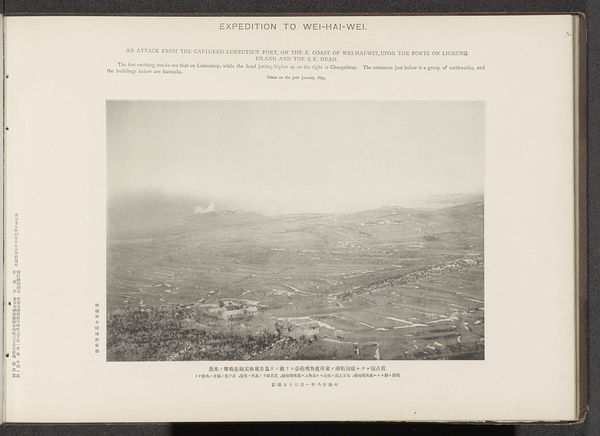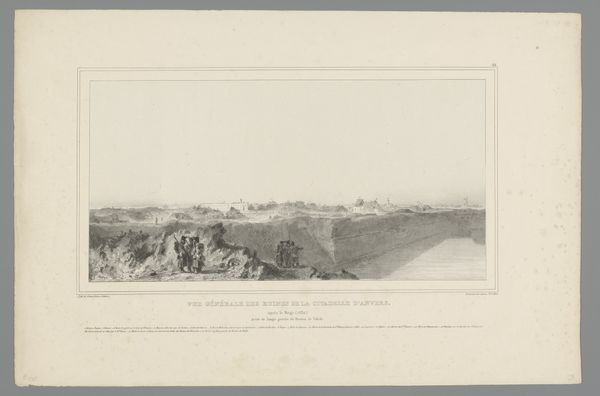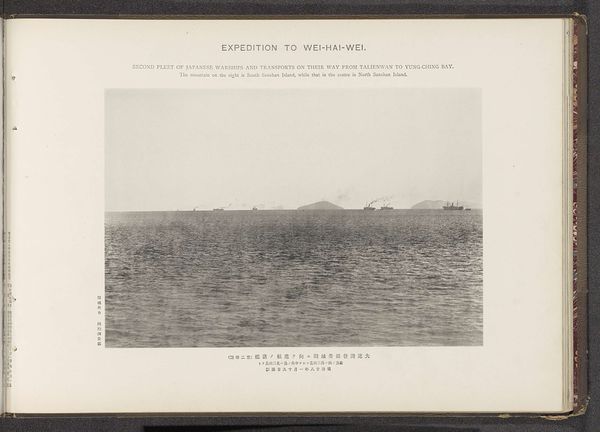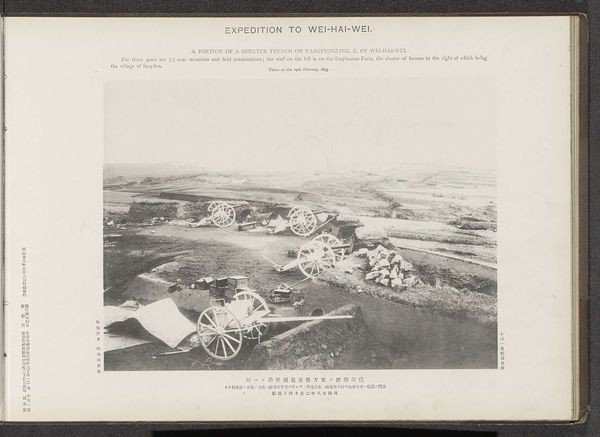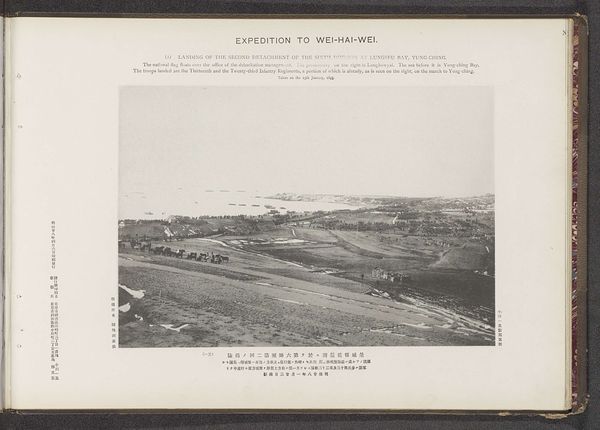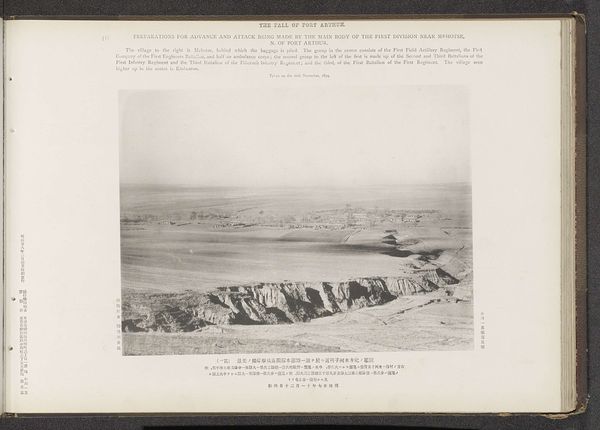
A portion of the shelter trenches on Motienling, on the E. coast of Wei-Hai-Wei Possibly 1895
0:00
0:00
photography, gelatin-silver-print
#
landscape
#
photography
#
orientalism
#
gelatin-silver-print
#
history-painting
Dimensions: height 196 mm, width 287 mm
Copyright: Rijks Museum: Open Domain
Curator: Here we have a gelatin silver print, possibly from 1895, titled "A Portion of the Shelter Trenches on Motienling, on the E. coast of Wei-Hai-Wei," created by the Ordnance Survey Office. It's part of a larger historical narrative, capturing a specific moment during the expedition. Editor: My first thought is how desolate and raw it looks. The tonal range is so compressed. There are very few highlights, which makes the image feel heavy. The landscape is littered with debris – the very materiality of conflict laid bare. Curator: Yes, the image is quite stark. This photograph provides crucial documentation, not just of the landscape, but of the late Qing Dynasty's military defenses. Consider its broader implications: this was a period of intense colonial pressure, and photography served as a powerful tool for shaping public perceptions and justifying intervention. Editor: Absolutely. And what is this expedition really about? Resources! Wei-Hai-Wei's control of those mines speaks of larger geopolitical strategies and economic control through controlling labor, and material exploitation. The wagons, for example; the potential materials they can transport— the social ramifications are embedded within such technologies. Curator: That is interesting! Orientalism played a role, too. Images like these often reinforced Western narratives of technological and military superiority, fueling further imperial ambitions. Editor: So true. This is what the photograph truly means—a display of technology and power relations. Curator: Thinking about it now, beyond the purely documentary purpose, there’s also an implicit attempt to render a comprehensive view of war, making it almost...understandable, consumable for public audiences back home. Editor: It gives the "action" and its processes of labor the forefront for audiences to consume without truly confronting it. That makes me uncomfortable. Curator: Absolutely. A somber but revealing piece, isn't it? It layers different ways in understanding an historical point of time. Editor: Precisely, from geopolitical maneuvering to material realities; there is much at play to decode for an image with very little "visual pleasure".
Comments
No comments
Be the first to comment and join the conversation on the ultimate creative platform.
